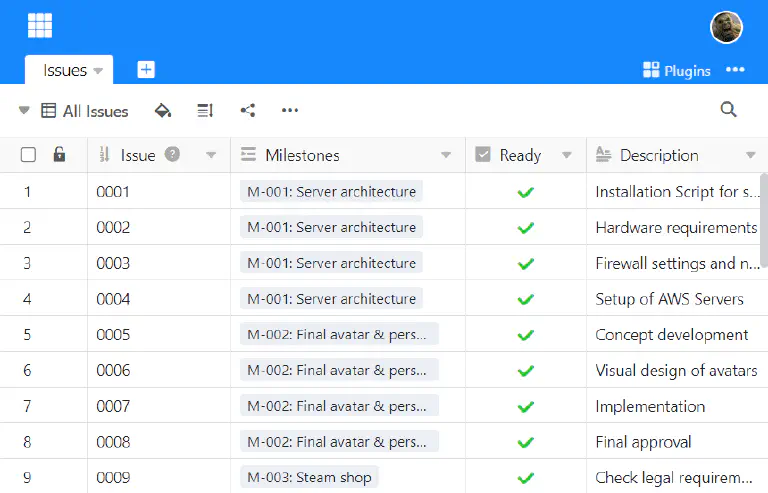Table of Contents
Whenever you view your data in a table, you view it through a view. Even if you have created a brand new table, you are already viewing it in the Default View that comes with it by default.
What are views used for?
In a conventional spreadsheet application such as Excel, every user sees the contents of the spreadsheets in the same way - if you hide columns, for example, the column is also hidden for all other users.
In SeaTable you can create views, i.e. you define which of your information you want to view using filters, sorting, grouping and hiding. This way you can display exactly the data that is relevant to you individually at the moment.
What does it mean? Here are some examples of views you can create:
- If you have a table with tasks, you can create a separate view for each employee, showing only the tasks assigned to a specific employee.
- If you have a table with many columns, you can create a view that hides certain columns, making the table clearer.
- If you have a spreadsheet of customer meetings, you can create a calendar view that displays all your customer appointments in a monthly calendar.
It is important to understand that a view is just another way of looking at the same underlying data! This means that if you edit the data of a table in one view, this data will change in all views of the table, because all views look at the same data set.
The table as the default representation of a view
The table view is the default display format in a SeaTable base. It is very similar to a spreadsheet, as the records are organized in rows and columns.

You can use other representations like calendar, gallery or kanban in the form of plugins .
More articles on the subject of views
- Create a new view
- Rename a view
- Delete a view
- Duplicating views
- Differences between private and normal views
- Printing a view
- Change the order of views
- Group views in folders
- Filtering Entries in a View
- Link filter rules with AND and OR
- Sorting Entries in a View
- Grouping entries in a view
- Cell coloring
- Color marking of cells
- Adjust row height
- Adjust the number of fixed columns
- Hide and move columns
- Lock Views
- Sharing a view with a team member
- Create external link for a view